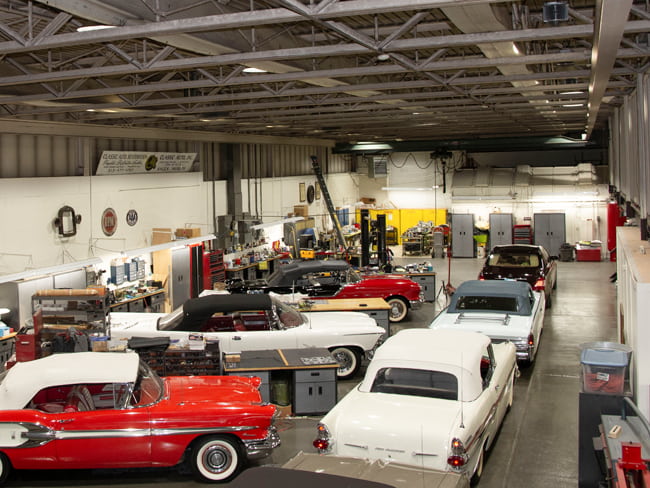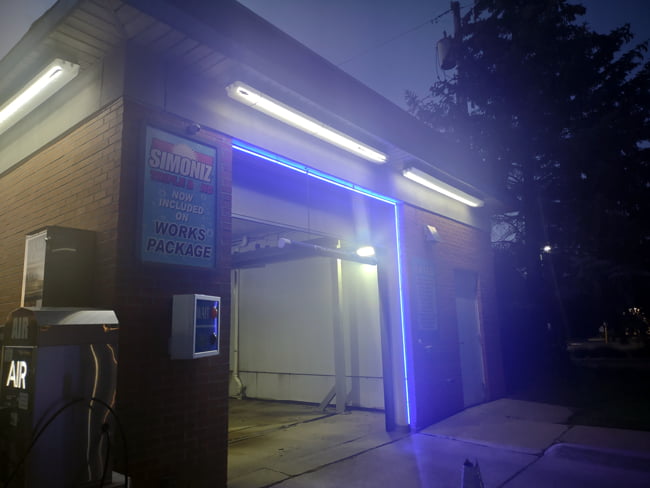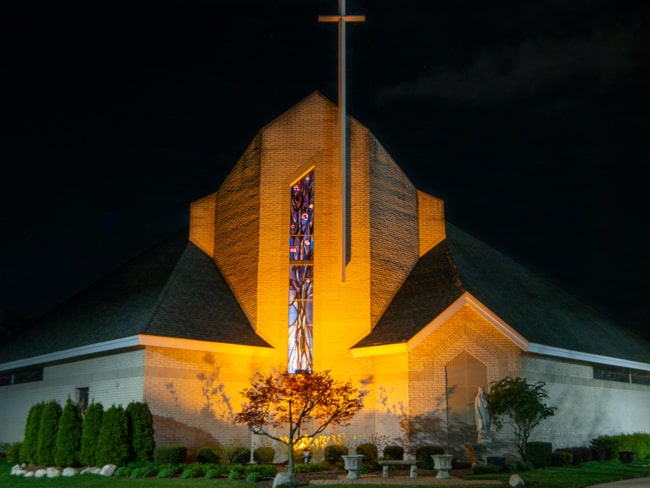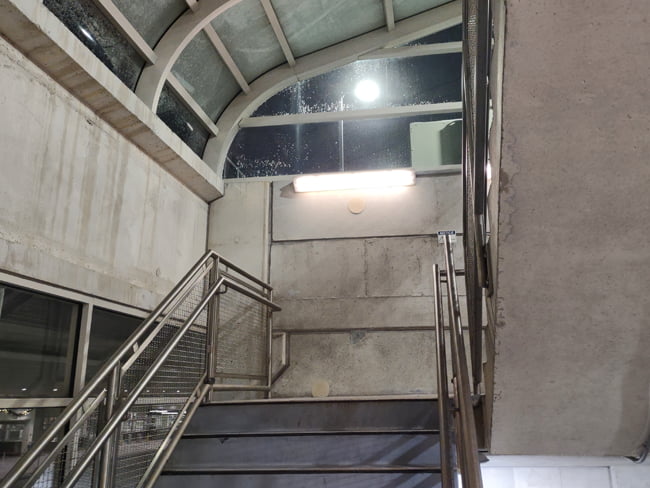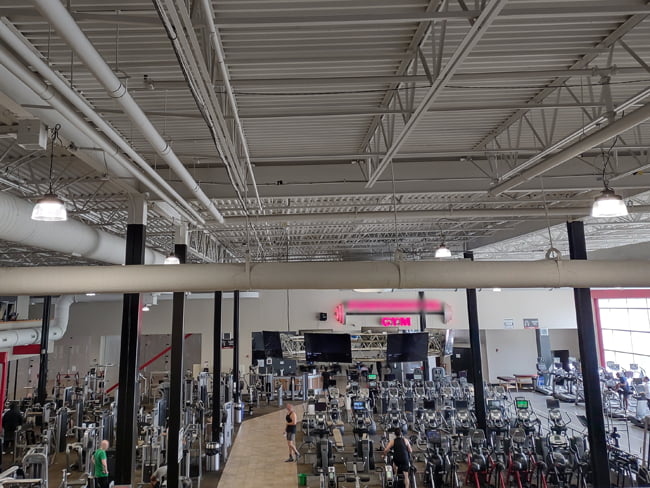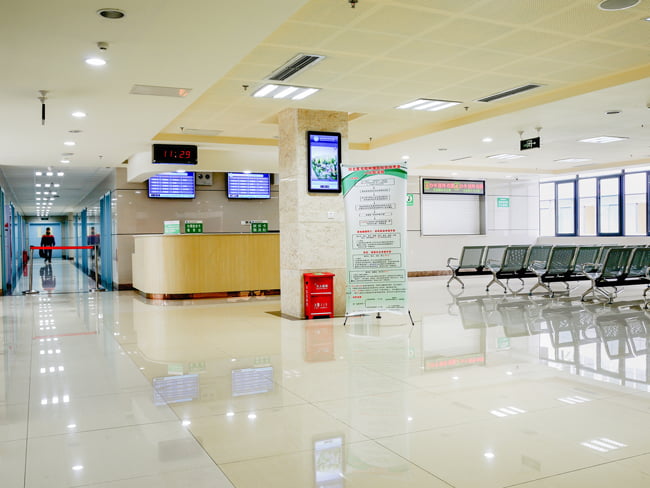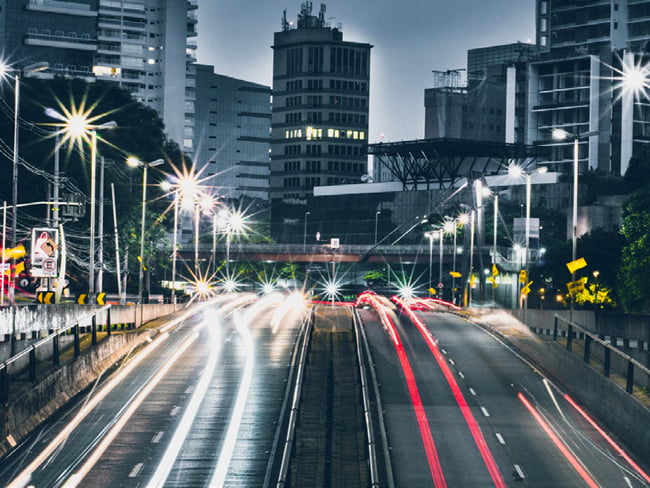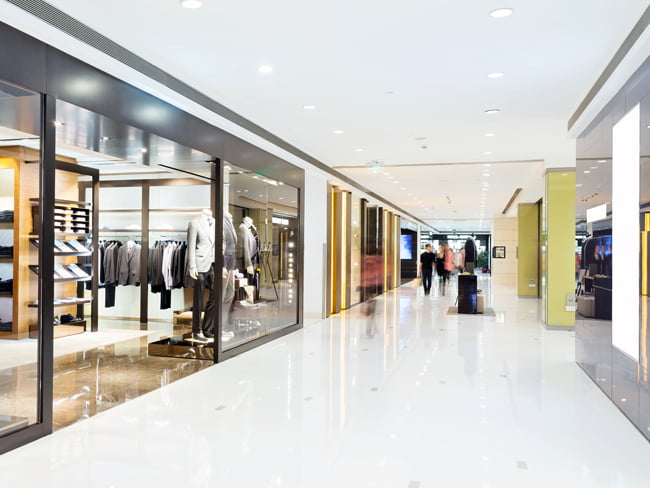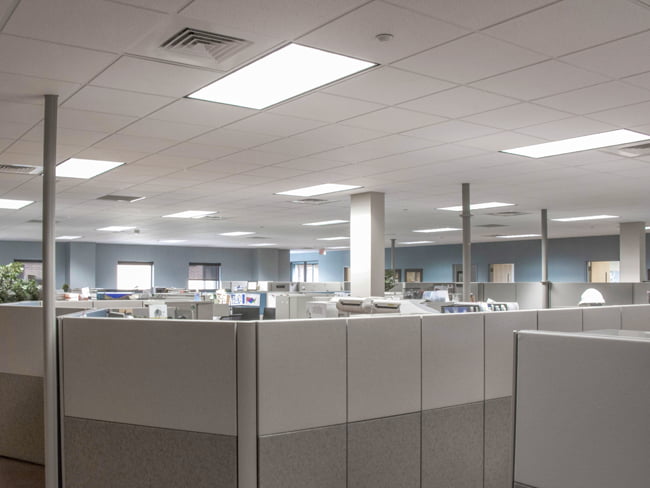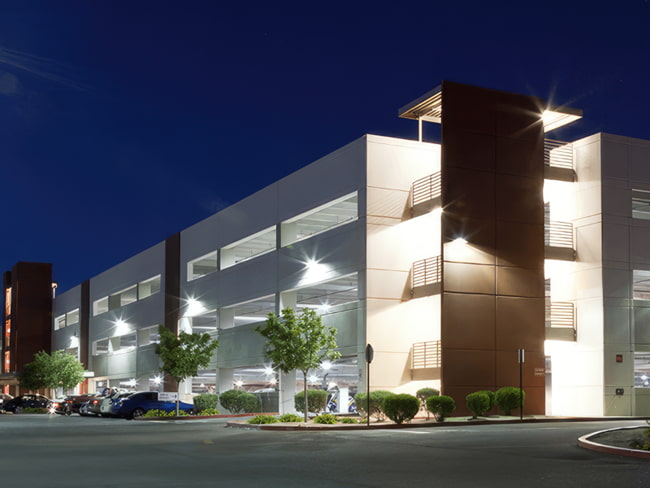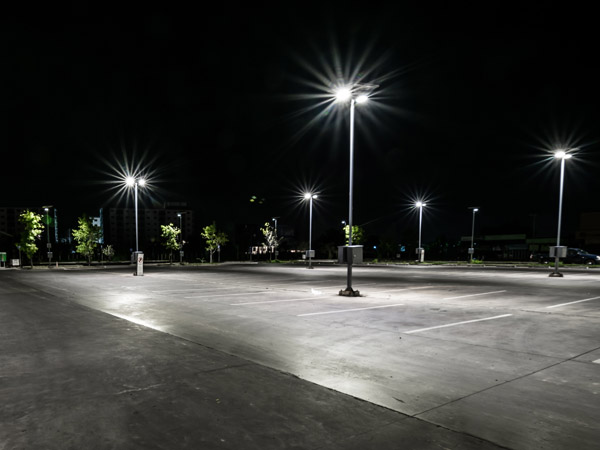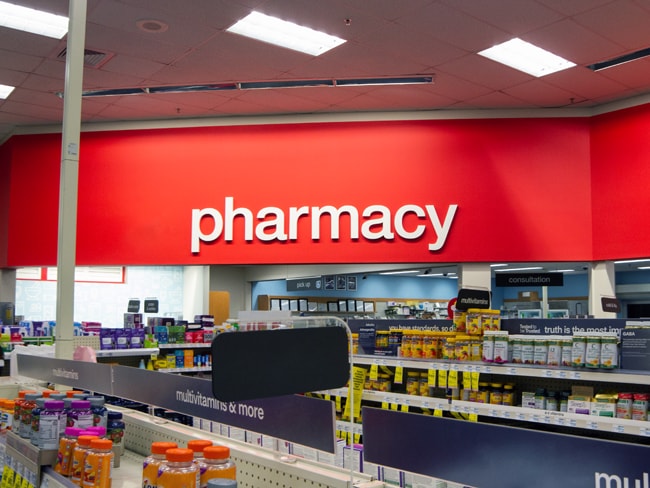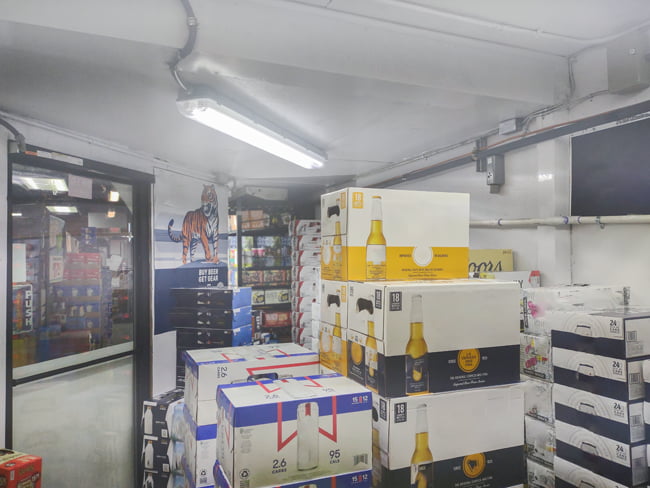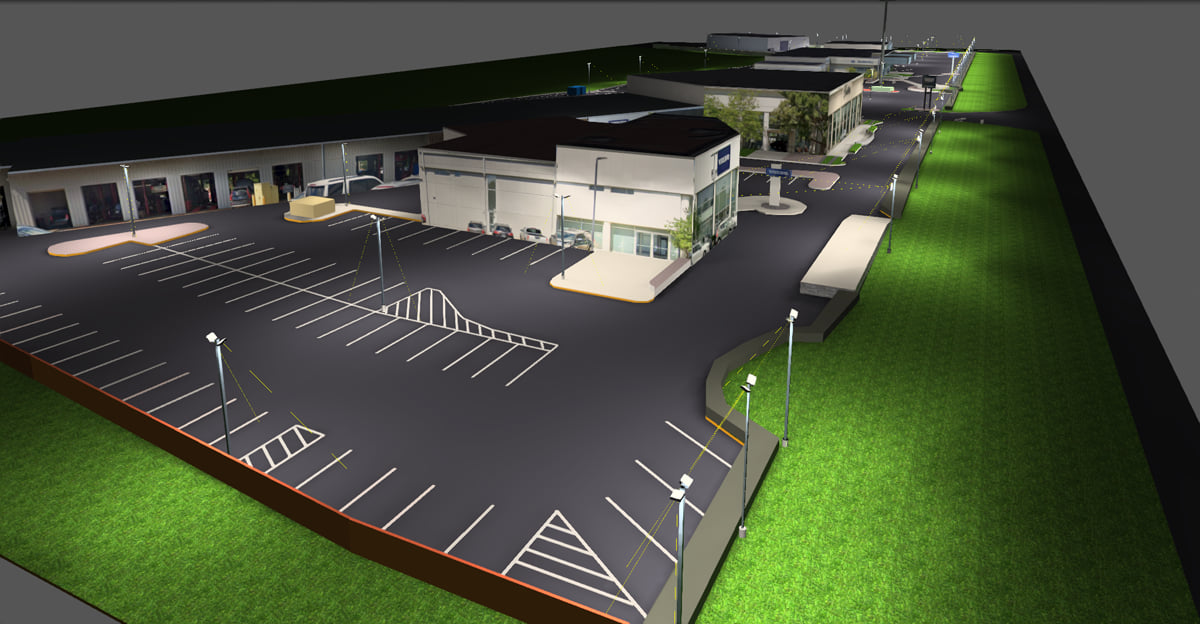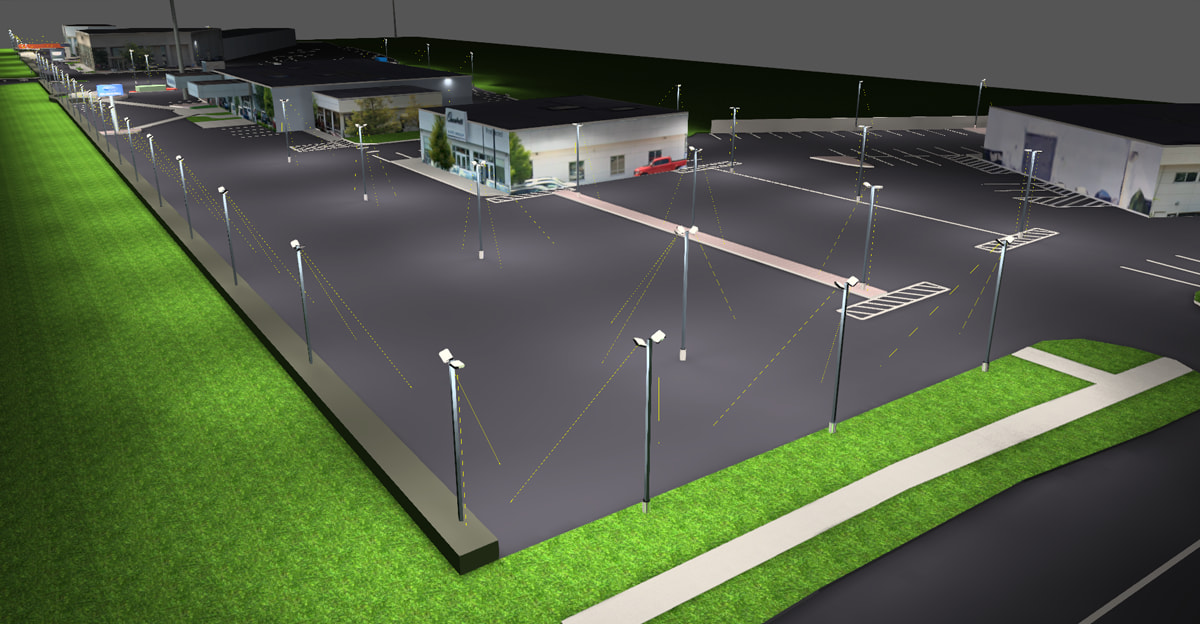Commercial Applications
Commercial Lighting Applications
What is Commercial Lighting?
Commercial lighting refers to lighting for businesses or other entities that aren’t considered residential. This includes lighting systems for office areas, retail stores, parking lots, etc. Commercial lighting encompasses both functional and aesthetic aspects to create an appropriate ambiance, ensure safety, and meet specific needs of the business environment.
Commercial Lighting Types
Commercial lighting can be categorized based on various criteria, such as purpose, source, or fixture type. Here are some of the most commonly used commercial lights in general,
Commercial Lighting Examples
As you can see on this page, there are many examples of commercial lighting. Here are some of the most common examples,
- Auto Shop Lighting
- Gas Station Lighting
- Gym Lighting
- Mall Lighting
- Office Lighting
- Parking Garage Lighting
- Parking Lot Lighting
- Pole Barn Lighting
- Real Estate & Property Lighting
- Storage Unit Lighting
Commercial Lighting Fixtures
Commercial lighting fixtures are designed to house and position light sources effectively within a commercial space. Here are some of the most common fixtures used in commercial settings:
: These are rectangular light fixtures that fit into a modular dropped ceiling grid, typically used in office environments. They can house fluorescent or LED light sources.
: Installed inside the ceiling, these fixtures offer a clean, flush look, providing direct illumination downwards. They're common in offices, retail spaces, and some hospitality environments.
: This system involves a continuous track that can accommodate multiple light fixtures. It's flexible, allowing the light direction to be easily adjusted, making it popular in retail settings and galleries.
Pendant Lights: These hang from the ceiling, often used for task or accent lighting, especially over counters, desks, or dining areas.
: Mounted on walls, these fixtures provide both functional and decorative light. They're common in hallways, restaurants, and hotel lobbies.
: Designed for spaces with high or low ceilings respectively. High bay lights are common in warehouses, factories, and gyms, while low bay lights are used in garages and smaller retail spaces.
: This encompasses a variety of fixtures such as floodlights, post-top lights, landscape lights, and wall packs, designed specifically for outdoor use.
: Critical for safety, these fixtures provide illumination during power outages and clearly mark exit pathways.
: As the name suggests, these are mounted beneath cabinets, often in kitchens or workspaces to provide task lighting.
: These are elongated fixtures suspended from the ceiling, providing both direct and indirect lighting. They're popular in modern office designs.
: Designed for use in gas stations or as underpasses, these fixtures are mounted to a structure's canopy or ceiling, providing downward illumination.
Selecting the right fixture not only ensures adequate and efficient lighting but also plays a significant role in defining the aesthetics and functionality of a commercial space.
Commercial Lighting Sources
LED (Light Emitting Diode):
LEDs are semiconductor devices known for their energy efficiency and longevity. They turn on instantly, have a wide range of color temperatures, and are versatile, suitable for various applications from ambient to outdoor lighting.
Fluorescent:
Fluorescent lights utilize a phosphorescent coating and mercury gas to emit light. They're more energy-efficient than incandescents and are common in offices and retail spaces. However, they contain mercury and might need a warm-up time.
Incandescent:
Incandescents generate light by heating a wire filament. They offer a warm light and are inexpensive but are less energy-efficient with a shorter lifespan. They are now less common in commercial settings.
Halogen:
A type of incandescent, halogens contain halogen gas, producing a bright, white light. They're more efficient than traditional incandescents but run hotter, making them suitable for focused lighting needs.
HID (High-Intensity Discharge):
HID lights work by passing an electric current through gas or vapor. Types include Metal Halide (bright, white light), High-Pressure Sodium (yellow-orange glow), and Mercury Vapor (older, less efficient). They're great for illuminating large areas but require warm-up periods.
Commercial Lighting Layouts
Here’s an example of a 3D commercial lighting photometric design constructed by our professional lighting engineers. In this example, 131 PCS of 300 watt LED area lights were used for the parking area around an automotive dealership. Other lighting fixtures/accessories used includes, 4 120W LED wall packs, 99 slipfitter mounts, 32 adjustable pole mounts, tenon square pole top, double bullhorns, and triple bullhorns.
Fixture Type 1: 300W Area Lights (9 PCS)
Fixture 1 Count: 131 PCS
Fixture Type 2: 120W Wall Packs (4 PCS)
Fixture 2 Count: 4 PCS
Accessories: Double bullhorns, triple bullhorns, tenon square pole top, slipfitter mounts, adjustable pole mounts
Parking Lot Average Illumination: 15.8 fc
Parking Lot Max Illumination: 45.3fc
Commercial Lighting Cost
The cost of commercial lighting varies widely based on several factors, such as the type of light source, the specific fixture, the quality and brand of the product, any advanced features (like smart controls or sensors), and the scale of the project.
For instance, standard office troffers might range from $50 to $200 or more based on quality and features. High-bay fixtures for warehouses could be in the range of $100 to $500 or more. Outdoor fixtures, like floodlights or post-top lights, can vary from $100 to several hundred dollars.
The commercial lighting fixtures at our store range from $20 for tiny area lights up to $300 for more powerful high bay style lights depending on the style, power, and environment where the fixture needs to operate in.
Commercial Lighting Services
Commercial lighting services encompass a broad spectrum of offerings tailored to the needs of businesses and commercial spaces. Here are some examples of these services:
Consultation & Design: Experts assess the lighting needs of a commercial space and design a lighting plan tailored to its requirements. This includes determining the right type and placement of fixtures, as well as considering aesthetics, efficiency, and functionality.
Installation: This involves the physical placement and wiring of light fixtures, control systems, and any associated components.
Maintenance & Repair: Routine services to ensure that commercial lighting systems function optimally. This could involve changing bulbs, troubleshooting malfunctions, or making repairs.
Retrofitting & Upgrades: Updating older lighting systems with newer, more efficient solutions, like transitioning from fluorescent fixtures to LEDs.
Energy Audits: A service that evaluates the energy consumption of a lighting system, identifies inefficiencies, and recommends solutions to reduce energy costs.
Lighting Control Systems: Installation and configuration of systems that provide automated or manual control of lighting based on factors like occupancy, daylight availability, or specific tasks.
Emergency & Exit Lighting: Ensuring that emergency and exit lighting systems comply with safety regulations, including regular tests and maintenance.
Exterior & Landscape Lighting: Design, installation, and maintenance of outdoor lighting solutions, including parking lots, building facades, landscapes, and signage.
Rebates & Incentives Consulting: Some services help businesses identify and apply for rebates and incentives available for installing energy-efficient lighting.
Relighting & Recycling: Properly disposing of or recycling old lighting fixtures and bulbs, especially important given that some bulbs (like fluorescents) contain hazardous materials.
Custom Lighting Solutions: Creating specialized lighting solutions tailored to unique commercial needs, such as decorative fixtures for hospitality spaces or specialized lighting for manufacturing processes.
Why Use Commercial LED Lights?
There are many benefits to using LEDs for commercial applications. One of the main benefits is that LEDs are more energy efficient as opposed to traditional lighting methods such as fluorescents. This energy-efficiency can save substantial costs for a business or municipality. Other benefits include:
- Little to no maintenance costs
- Environmentally friendly
- Safer working environments
- Easy to replace
- Higher quality illumination

